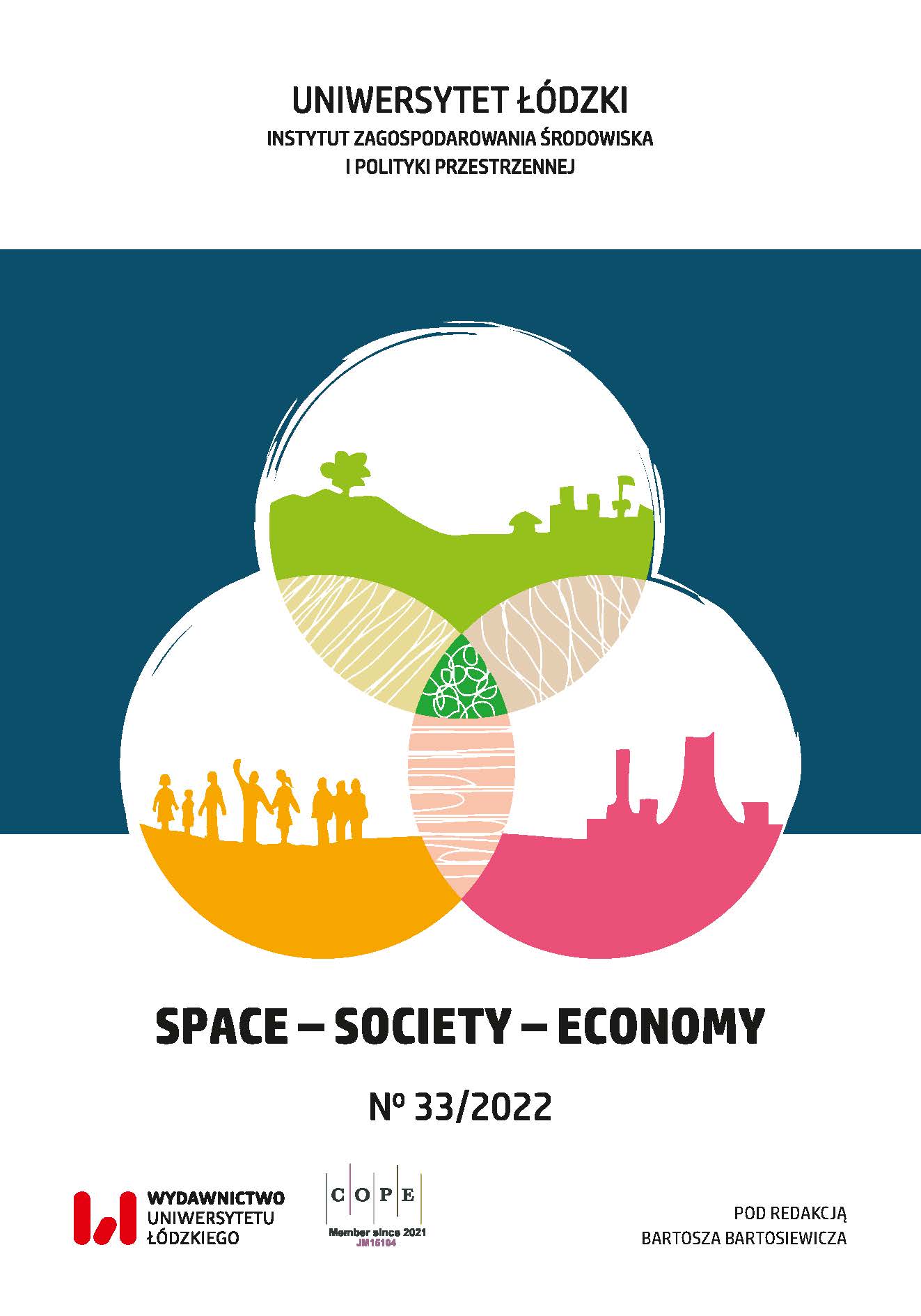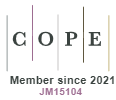The Second Demographic Transition in Large Cities in Poland and Its Implications
DOI:
https://doi.org/10.18778/1733-3180.33.01Keywords:
the second demographic transition, forms of marital and family life, matrimonial phenomena, reproductive phenomena, big citiesAbstract
The transformations of contemporary societies, including the broadly understood modernisation, have an impact on the sociological, psychological, and demographic image of the family. The concepts explaining the transformations of matrimonial and procreation phenomena emphasise the individuality of people, their emotions, feelings, specific needs, as well as the understanding of families in terms of institutions and interests. The theory explaining contemporary changes in the areas of marriage and reproduction is the concept of the second demographic transition, formulated by Dirk van de Kaa and Ron Lesthaeghe at the turn of the 1970s and 1980s. In explaining the importance of factors favouring the postponement of marriage and reproduction, reference was also made to the economic and sociological concepts of civil partnership and marriage, and the increase in preferences to limit the number of children.
The article presents the changes in the forms of marriage and family life in cities, using the available statistical data in the period of 1990–2019. The aim of the study was to identify and assess changes in the area of the matrimonial and reproductive behaviour in cities in Poland, especially in large urban centres. The analysis of statistical data shows that the transformations of matrimonial and procreation phenomena vary in time and space. The results obtained from the analysis of matrimonial and reproductive phenomena in large cities confirmed the conclusions of other studies, but also provided new insights into changes in demographic behaviour. The clear disproportions in the dynamics of demographic changes in cities of various sizes, occurring at the beginning of the transformation period, are weakening. In many areas of matrimonial and reproductive changes, the pace of change is currently higher in medium-sized cities. The division of the country into the east, the south-east, the west, the and north which have been different in terms of demographic behaviour – has been confirmed for years. Nevertheless, it is the inhabitants of large urban agglomerations that assimilate new patterns of behaviour the fastest, which is why the spatial differentiation of the forms of marital and family life does not fully correspond to the above-mentioned spatial arrangement.
Depopulation processes and the transformations of the demographic structure are a direct implication of contemporary population transformations related to the second demographic transition, especially in terms of unfavourable trends in the ageing of the society and low birth rate. The deepening demographic decline in most urban centres and the ageing of the society forces us to pursue an urban policy which would be focused on the challenges related to this situation. Demographic challenges are of a structural and countrywide dimension, hence they should primarily be of interest to the demographic and social policy of the state. This does not mean, however, that they cannot also be taken into account in the case of urban policy – understood as the territorial dimension of both state policies regarding urban development and development policies conducted by individual cities.
Downloads
References
Becker G., 1973, A Theory of Marriage, „Journal of Political Economy”, 81(4): 813–846.
Google Scholar
DOI: https://doi.org/10.1086/260084
Becker G., 1974, A Theory of Social Interactions, „Journal of Political Economy”, 82(6): 1063–1093.
Google Scholar
DOI: https://doi.org/10.1086/260265
Becker G., 1991, A Treatise on the Family. Enlarged Edition, Harvard University Press, Cambridge.
Google Scholar
Brzozowska Z., 2011, Przestrzenne zróżnicowanie urodzeń pozamałżeńskich w Polsce w latach 2002–2010, „Studia Demograficzne”, 2(160): 59–83.
Google Scholar
Centrum Badań i Analiz Rynku, 2021, Zbadanie i określenie warunków do poprawy kondycji demograficznej Polski wraz z rekomendacjami zmian w obszarze godzenia życia zawodowego i prywatnego z wykorzystaniem środków z EFS w perspektywie finansowej 2021–2027, Ministerstwo Rodziny i Polityki Społecznej.
Google Scholar
Duszczyk M., Fihel A., Kiełkowska M., Kordasiewicz A., Radziwinowiczówna A., 2014, Analiza kontekstualna i przyczynowa zmian rodziny i dzietności, „Studia i Materiały”, nr 2, Ośrodek Badań nad Migracjami, Warszawa.
Google Scholar
Easterlin E.A., 1976, An Economic Framework for Fertility Analysis, „Studies and Family Planning”, 6(2): 54–63.
Google Scholar
DOI: https://doi.org/10.2307/1964934
Fihel A., Kiełkowska M., Radziwinowiczówna A., Rosińska A., 2017, Determinanty spadku płodności w Polsce – próba syntezy, „Studia Demograficzne”, 2(172): 35–69.
Google Scholar
DOI: https://doi.org/10.33119/SD.2017.2.1
Frątczak E., 2017, Rodzina: refleksja nad zmianą i jej kontekstem teoretycznym, [w:] M. Bednarski, Z. Czepulis-Rutkowska, D. Głogosz (red.), O racjonalną politykę rodzinną. Rodzina formacją niezastąpioną? Księga jubileuszowa profesor Bożeny Balcerzak-Paradowskiej, Centrum Partnerstwa Społecznego „Dialog” im. Andrzeja Bączkowskiego–Instytut Pracy i Spraw Socjalnych, Warszawa: 28–44.
Google Scholar
Goldstein J.R., Sobotka T., Jasilioniene A., 2009, The End of “Lowest-Low” Fertility?, „Population and Development Review”, 35: 663–699.
Google Scholar
DOI: https://doi.org/10.1111/j.1728-4457.2009.00304.x
Israel J.I., 2001, Radical Enlightenment: Philosophy and the Making of Modernity 1650–1750, University Press, Oxford.
Google Scholar
Janiszewska A., 2013a, Zachowania matrymonialne i prokreacyjne – ujęcie geograficzne, Wydawnictwo Uniwersytetu Łódzkiego, Łódź.
Google Scholar
DOI: https://doi.org/10.18778/7525-964-3
Janiszewska A., 2013b, The Second Demographic Transition in Europe and its implications, [w:] J. Dzieciuchowicz, A. Janiszewska (red.), Przemiany w sferze zachowań demograficznych w okresie przekształceń społeczno-gospodarczych, „Space–Society–Economy”, 12: 21–41, Department of Spatial Economy and Spatial Planning, Wydawnictwo Uniwersytetu Łódzkiego, Łódź.
Google Scholar
DOI: https://doi.org/10.18778/1733-3180.12.02
Janiszewska A., 2019a, Problemy demograficzne dużych miast w Polsce – rozwój czy regres?, [w:] B. Cieślińska (red.), Oblicza dużego miasta. Instytucje, organizacje, procesy, Wydawnictwo Uniwersytetu w Białymstoku, Białystok.
Google Scholar
Janiszewska A., 2019b, Starzenie się ludności w polskich miastach, „Space–Society–Economy”, 29: 45–69.
Google Scholar
DOI: https://doi.org/10.18778/1733-3180.29.03
van de Kaa D.J, 1994, The second demographic transition revisited: Theories and expectations, [w:] G. Beets, H. van den Brekel, R. Cliquet (red.), Population and family in the Low Countries 1993: Late fertility and other current issues, NIDI/CBGS Publication, 30: 81–126, Swets & Zeitlinger, Lisse.
Google Scholar
van de Kaa D.J., 1997, Options and sequences: Europe’s demographic patterns, „Journal of the Australian Population Association”, 14(1): 1–29.
Google Scholar
DOI: https://doi.org/10.1007/BF03029484
van de Kaa D.J., 1999, Europe and its population: the long view, [w:] D.J. van de Kaa, H. Leridon, G. Gesano, M. Okólski, European Populations: Unity in Diversity, Kluwer Academic Publishers, Boston–Dordrecht–New York: 1–49.
Google Scholar
DOI: https://doi.org/10.1007/978-94-010-9022-3_1
van de Kaa D. J., 2001a, Demographic Transition, Second, „International Encyclopedia of the Social & Behavioral Sciences”, 5: 3486–3488.
Google Scholar
DOI: https://doi.org/10.1016/B0-08-043076-7/02134-3
van de Kaa D. J., 2001b, Postmodern fertility preferences: from changing value orientation to new behavior, [w:] R.A. Bulatao, J.B. Casterline (red.), Global Fertility Transition, Supplement to PDR, 27: 290–331, Population Council, New York.
Google Scholar
van de Kaa D.J., 2008, Demographic Transitions, „NIDI Working Paper”, 1. The Hague, NIDI: 1–62.
Google Scholar
van de Kaa D.J., Herrenalb B., 2001, Second Demographic Transition: concepts, dimensions, new evidence, https://www.demogr.mpg.de/papers/workshops/010623_paper04.pdf (data dostępu: 16.05.2022).
Google Scholar
Kotowska I. (red.), 1999, Przemiany demograficzne w Polsce w latach 90. w świetle koncepcji drugiego przejścia demograficznego, Szkoła Główna Handlowa, Warszawa.
Google Scholar
Kotowska I., 2019, Uwagi o urodzeniach i niskiej dzietności w Polsce oraz polityce rodzinnej wspierającej prokreację, „Studia Demograficzne”, 2(176): 11–29.
Google Scholar
DOI: https://doi.org/10.33119/SD.2019.2.1
Krzysztofik R. (red.), 2019, Przemiany demograficzne miast Polski. Wymiar krajowy, regionalny i lokalny, Instytut Rozwoju Miast i Regionów, Warszawa–Kraków.
Google Scholar
Kwak A., 1995a, Konkubinat – kohabitacja w świadomości społecznej, „Problemy Rodziny”, 35(5): 11–13.
Google Scholar
Kwak A., 1995b, Niezamężna kohabitacja jako zjawisko społeczne, „Studia Socjologiczne”, 3–4: 141–156.
Google Scholar
Lesthaeghe R., 1994, The second demographic transition in Western countries: An interpretation, [w:] K.O. Mason, A.-M. Jensen (red.), Gender and family change in industrialized countries, Clarendon Press, Oxford: 17–62.
Google Scholar
Lesthaeghe R., 2010, The Unfolding Story of the Second Demographic Transition, „Population and Development Review”, 36(2): 211–251.
Google Scholar
DOI: https://doi.org/10.1111/j.1728-4457.2010.00328.x
Lesthaeghe R., Surkyn J., 2002, New forms of household formation in Central and Eastern Europe: are they related to the newly emerging value orientations?, „Economic Survey of Europe”, 1: 197–216.
Google Scholar
Matlin N., 1996, The Psychology of Women, Harcourt Brace College Publishers, New York.
Google Scholar
Matysiak A., 2009, Is Poland really ‘immune’ to the spread of cohabitation?, „Demographic Research”, 21(8): 215–234.
Google Scholar
DOI: https://doi.org/10.4054/DemRes.2009.21.8
Okólski M., 2005, Demografia. Podstawowe pojęcia, procesy i teorie w encyklopedycznym zarysie, Scholar, Warszawa.
Google Scholar
Okólski M., 2006, Płodność i rodzina w okresie transformacji, [w:] J. Wasilewski (red.), Współczesne społeczeństwo polskie. Dynamika zmian, Scholar, Warszawa: 103–144.
Google Scholar
Okólski M., Fihel A., 2012, Demografia. Współczesne zjawiska i teorie, Scholar, Warszawa.
Google Scholar
Prognoza ludności na lata 2014–2050, 2014, https://stat.gov.pl/obszary-tematyczne/ludnosc/prognoza-ludnosci/prognoza-ludnosci-na-lata-2014-2050-opracowana-2014-r-,1,5.html (data dostępu: 16.05.2022).
Google Scholar
Radzikowska B., 1995, Płodność w Polsce w kontekście teorii przejścia demograficznego. Modelowanie i prognozowanie, Wydawnictwo Akademii Ekonomicznej im. Oskara Langego we Wrocławiu, Wrocław.
Google Scholar
Rosset E., 1975, Demografia Polski, t. 2, Reprodukcja ludności, Państwowe Wydawnictwo Naukowe, Warszawa.
Google Scholar
Slany K., 2000, Przemiany demograficzne w Polsce końca XX wieku, „Problemy Rodziny”, 4: 7–12.
Google Scholar
Sobotka T., 2011, Fertility in Central and Eastern Europe after 1989: Collapse and gradual recovery, „Historical Social Research”, 36(2): 246–296.
Google Scholar
Szlendak T., 2012, Socjologia rodziny. Ewolucja, historia, zróżnicowanie, Wydawnictwo Naukowe PWN, Warszawa.
Google Scholar
Szukalski P., 2001, Płodność i urodzenia pozamałżeńskie w Polsce, „Prace Instytutu Ekonometrii i Statystyki UL”, seria A, 132(35): 109–129, http://repozytorium.uni.lodz.pl:8080/xmlui/handle/11089/4100 (data dostępu: 16.05.2022).
Google Scholar
Szukalski P, 2008, Status społeczny matek dzieci pozamałżeńskich w Polsce przełomu XX i XXI wieku, „Roczniki Socjologii Rodziny”, 2008/2009, XIX: 11–32.
Google Scholar
Szukalski P., 2019, Zmiany zachowań rozrodczych w XXI wieku – czy program Rodzina 500+ ma na nie wpływ?, [w:] E. Osewska, J. Stala (red.), Rodzina w społeczeństwie – relacje i wyzwania, Wydawnictwo Naukowe Uniwersytetu Papieskiego Jana Pawła II, Kraków: 53–74.
Google Scholar
DOI: https://doi.org/10.15633/9788374388269.06
Śleszyński P., Wiśniewski R., Szejgiec-Kolenda B., 2018, Demographic Processes in Poland in the Years 1946–2016 and Their Consequences for Local Development: Current State and Research Perspectives, „Geographica Polonica”, 91(3): 317–334.
Google Scholar
DOI: https://doi.org/10.7163/GPol.0123
The impact of demographic change on European regions. Synthesis report, 2011, Council of the European Union, Budapest, https://www.mmr.cz/getmedia/ebfd19f5–617f-4615-b6a2-afedf14e1fda/Impact_of_demographic_trends (data dostępu: 16.05.2022).
Google Scholar
Downloads
Published
How to Cite
Issue
Section
License

This work is licensed under a Creative Commons Attribution-NonCommercial-NoDerivatives 4.0 International License.









